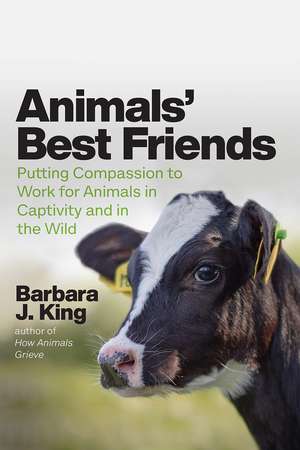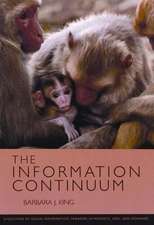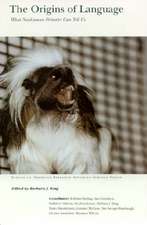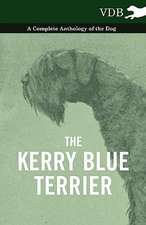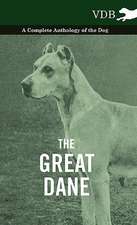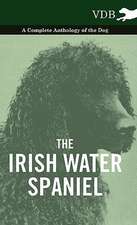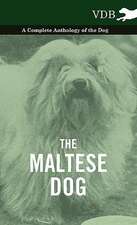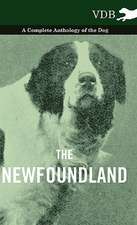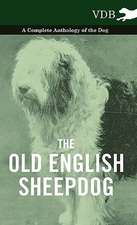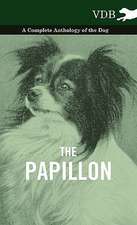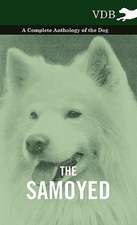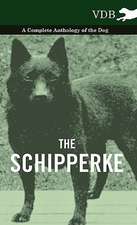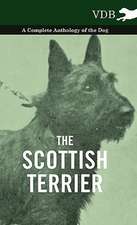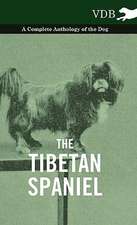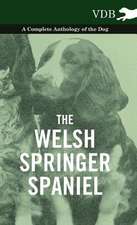Animals' Best Friends: Putting Compassion to Work for Animals in Captivity and in the Wild
Autor Barbara J. Kingen Limba Engleză Hardback – 23 mar 2021
Finalist for the 2021 Siskiyou Prize for New Environmental Literature
As people come to understand more about animals’ inner lives—the intricacies of their thoughts and the emotions that are expressed every day by whales and cows, octopus and mice, even bees—we feel a growing compassion, a desire to better their lives. But how do we translate this compassion into helping other creatures, both those that are and are not our pets? Bringing together the latest science with heartfelt storytelling, Animals’ Best Friends reveals the opportunities we have in everyday life to help animals in our homes, in the wild, in zoos, and in science labs, as well as those considered to be food.
Barbara J. King, an expert on animal cognition and emotion, guides us on a journey both animal and deeply human. We meet cows living relaxed lives in an animal sanctuary—and cows with plastic portals in their sides at a university research station. We observe bison free-roaming at Yellowstone National Park and chimpanzees confined to zoos. We learn with King how to negotiate vegetarian preferences in omnivore restaurants. We experience the touch of a giant Pacific octopus tasting King’s skin with one of his long, neuron-rich arms. We reflect on animal testing as King shares her own experience as the survivor of a particularly nasty cancer. And in a moment all too familiar to many of us, we recover from a close encounter with two spiders in the home.
This is a book not of shaming and limitation, but of uplift and expansion. Throughout this journey, King makes no claims of personal perfection. Though an animal expert, she is just like the rest of us: on a journey still, learning each day how to be better, and do better, for animals. But as Animals’ Best Friends makes clear, challenging choices can bring deep rewards. By turning compassion into action on behalf of animals, we not only improve animals’ lives—we also immeasurably enrich our own.
Preț: 184.31 lei
Nou
Puncte Express: 276
Preț estimativ în valută:
35.27€ • 38.43$ • 29.72£
35.27€ • 38.43$ • 29.72£
Carte disponibilă
Livrare economică 02-16 aprilie
Livrare express 18-22 martie pentru 43.60 lei
Preluare comenzi: 021 569.72.76
Specificații
ISBN-13: 9780226601489
ISBN-10: 022660148X
Pagini: 280
Dimensiuni: 140 x 216 x 25 mm
Greutate: 0.43 kg
Ediția:First Edition
Editura: University of Chicago Press
Colecția University of Chicago Press
ISBN-10: 022660148X
Pagini: 280
Dimensiuni: 140 x 216 x 25 mm
Greutate: 0.43 kg
Ediția:First Edition
Editura: University of Chicago Press
Colecția University of Chicago Press
Notă biografică
After twenty-eight years of teaching anthropology at the College of William and Mary, Barbara J. King retired early to become a science writer and public speaker. The most recent of her seven books are Personalities on the Plate: The Lives and Minds of Animals We Eat and How Animals Grieve, both published by the University of Chicago Press. King’s work has been featured at Scientific American, Aeon, Undark, SAPIENS, NPR, the BBC, Times Literary Supplement, the World Science Festival, and the annual TED conference in Vancouver. Her TED talk on animal love and grief is available online at https://www.ted.com/speakers/barbara_j_king. She lives in Wicomico, VA.
Extras
“If you turn your back on these calves, they will mount you!” Standing in one of the cow barns at Farm Sanctuary in Watkins Glen in Upstate New York, I heard shelter director Susie Coston’s voice ring out through the warm August air. During Farm Sanctuary’s 2018 hoedown, an annual open-house weekend, Coston led a small group of invited speakers and our families around the property to meet some of the 735 resident animals. Calves who had been bottle fed at the sanctuary, like the one named Alexander Beans who reclined near me, often feel such warmth for people that they jump up and “embrace” a visitor in an excess of youthful exuberance. It’s meant well—but it can hurt, because at six months these calves may weigh over three hundred pounds.
Keeping my eyes open and my back unturned as I walked among the calves, I reached under a chin here and there to offer a caress. Eyes were upon me, and not just Coston’s: a cow called Bonnie stood just outside the barn door. Bonnie fixed a protective gaze on us visitors as we weaved among the youngsters. Famous in the world of rescued farm animals, Bonnie was born at a beef farm in Holland, New York. At four months old, her herd went up for sale when the farm owner died. A man soon showed up with a trailer to take away the cows, including Bonnie and her mother, to his own farm. The herd reacted with distress and fear.
Making a fateful decision, Bonnie bolted. She ran into nearby woods, and there she stayed for almost a year, an escapee who became known to local residents through brief glimpses and trail-cam images. Even at such a young age, Bonnie showed resourcefulness in surviving out in the forest, a wholly unfamiliar environment to her. Her most inspired choice was to join up with a herd of deer. Bonnie and the deer ate, slept, and traveled together. Trail-cam images show this wasn’t a lonely cow trailing haplessly after deer but a truly mutual acceptance. Whether Bonnie missed her mother we will never know, but through her wits, she found a new family for herself.
Bonnie’s second wise decision was to accept help from a human. Many local people admired Bonnie’s bold escape, but one woman named Becky went a step further and took action. Each day in the early morning, she walked out into the woods with a sled piled with food and bedding for Bonnie. Slowly, Bonnie came to trust her. In this way—surrounded by the bodily warmth of her deer companions and the kind caring of Becky—Bonnie survived a cold and snowy winter.
Forest living was not sustainable for Bonnie in the long term. The harsh winters were bad enough, but some local people considered her a pest and announced they would eat Bonnie if they could. The notion of this animal becoming a family’s supply of steak was too much for Coston and the Farm Sanctuary staff, who mounted a rescue. Twice the rescuers set out from Watkins Glen at 3:30 a.m. to be at the “breakfast spot” where Bonnie met Becky at 6:30. Twice Bonnie eluded capture. Her trust in Becky did not generalize to trust in other humans (with good reason). But gradually Bonnie became accustomed to entering a small corral constructed by the sanctuary team as a feeding area. On the third rescue attempt, rescuers darted Bonnie with a stronger sedative. That worked. Bonnie was transported back to Watkins Glen, where she permanently resides now. Gazing at Bonnie’s body posture and facial expression that August day, I could see for myself what a presence she has.
For so many of us who love animals, our dogs and cats, bunnies and ferrets, and snakes and fish are family members. We care for them through everyday acts of devotion to make their lives better. Opportunities to transform the lives of animals beyond our pets can be found, too, all around us; the trick is to uncover those opportunities and decide if we wish to act on them.
At Farm Sanctuary I used my sense of touch to soothe and be soothed by animals rescued from industrialized farms or other places where they had been abused or neglected. For two hours, animals of species whose thinking and feeling capacities I had written about for years snuffled, shuffled, and walked up to me—or sometimes away from me in a desire not to interact, as sanctuary residents are free to do. Unexpectedly, the strongest bond I felt was with a goat called Cynthia. A goat of the LaMancha breed, Cynthia responded blissfully when I stroked her head, neck, and chin; she turned firmly into my hand as a signal that I should not, please, think of stopping. Her former life on a Hudson Valley farm had been rough; according to Farm Sanctuary, she had arrived “lice-covered, anemic, weak, and quiet.” Eventually Cynthia recovered to become healthy, energetic, and in love with loving attention.
Like the cow Bonnie and the calf Alexander Beans who kindly did not mount me that morning, in sanctuary Cynthia has a life with a dual nature. She is recognized for the unique individual she is with all her moods, likes, and dislikes. Simultaneously she is a symbol of the powerful effect that compassionate action has on animal lives.
One morning just after Christmas 2017, thirteen elk fell through the ice into eight feet of frigid water in a reservoir near the Alpine Feed Ground, not far from Jackson, Wyoming. Morning commuters saw the herd suddenly go under. Stopping on the side of the road, a group of them mounted a rescue effort that soon came to include officials from the Wyoming Game and Fish Department and the Lincoln County Sheriff’s Office.
One of the passersby who joined in, Dusty Jones, later spoke to the media about the event: “We began cutting a little path toward the shore so the animals could walk out but they were so cold they couldn’t move. That’s when we just started grabbing them and pulling them out.”
Video of the rescue shows a group of men tying ropes around a thrashing and obviously frightened elk cow in the water, then hauling her out. The men run after another elk, now free of the water, in order to remove the rescue rope from her neck before she flees. Powerful animals who may easily weigh five hundred pounds, elk cows are no easy force of nature to handle, especially when they are adrenalized by fear. The effort required courage and hard cooperative labor. All thirteen elk were rescued.
A month earlier and over eighty-five hundred miles away from Wyoming, a baby elephant fell into a well while trying to cross a river in the town of Thattekad in India’s state of Kerala. Just as with the elk, “regular people” and government officials came together to help, this time with the aid of a mechanical digger in a five-hour rescue operation. The elephant infant’s kin had crowded around in distress; when finally the baby was able to walk up an incline of soil packed down by the rescuers for this purpose, a joyful family reunion occurred. Parts of this rescue, too, were captured on video. At the end, as the little herd moves away to cross the river, one of the adult elephants turns around and calmly raises her trunk toward the rescuers, who ululate in celebration. Was the raised trunk a gesture of gratitude? Knowing what I do about elephants’ intelligence, I think it’s perfectly possible.
In any given week, stories about animal rescues go viral on the internet. Some are as large-scale and dramatic as the elk and elephant examples, as when hour-by-hour updates come in from teams trying to rescue whales in the ocean who become entangled in fishing equipment. Others are smaller-scale: a family chooses an elderly cat to bring home from the animal shelter, or a driver, already late for work, stops to move a turtle to safety from the middle of the road.
When we see animals in trouble, concern wells up in us. We may worry for our neighbor’s dog chained outside in subzero temperatures, a bored-looking gorilla at a zoo, or a wild orca population in grave danger of extinction. Our compassion may blossom for a truckload of chickens headed to slaughter or for a spider crushed by a friend just because he finds arachnids to be creepy. The contexts are almost endless, and while that reality is sad, it also creates space for action. As Hope Ferdowsian puts it in her book Phoenix Zones, when we allow ourselves to see the urgency in situations of suffering, we are given a chance to make a difference. In our everyday lives we constantly make choices that affect animals for good or ill. When we tune in to the animal lives threaded through our own, opportunities for positive outcomes expand and flourish. That process catches us up in a net of rewards: our world may transform as we see how animals rejoice in good days and endure bad ones; love their families and friends and grieve their losses; and struggle to overcome physical and emotional challenges. When each of us takes positive steps to help, the collective impact is enormous, an arc in which we strive to create a better world for animals.
Keeping my eyes open and my back unturned as I walked among the calves, I reached under a chin here and there to offer a caress. Eyes were upon me, and not just Coston’s: a cow called Bonnie stood just outside the barn door. Bonnie fixed a protective gaze on us visitors as we weaved among the youngsters. Famous in the world of rescued farm animals, Bonnie was born at a beef farm in Holland, New York. At four months old, her herd went up for sale when the farm owner died. A man soon showed up with a trailer to take away the cows, including Bonnie and her mother, to his own farm. The herd reacted with distress and fear.
Making a fateful decision, Bonnie bolted. She ran into nearby woods, and there she stayed for almost a year, an escapee who became known to local residents through brief glimpses and trail-cam images. Even at such a young age, Bonnie showed resourcefulness in surviving out in the forest, a wholly unfamiliar environment to her. Her most inspired choice was to join up with a herd of deer. Bonnie and the deer ate, slept, and traveled together. Trail-cam images show this wasn’t a lonely cow trailing haplessly after deer but a truly mutual acceptance. Whether Bonnie missed her mother we will never know, but through her wits, she found a new family for herself.
Bonnie’s second wise decision was to accept help from a human. Many local people admired Bonnie’s bold escape, but one woman named Becky went a step further and took action. Each day in the early morning, she walked out into the woods with a sled piled with food and bedding for Bonnie. Slowly, Bonnie came to trust her. In this way—surrounded by the bodily warmth of her deer companions and the kind caring of Becky—Bonnie survived a cold and snowy winter.
Forest living was not sustainable for Bonnie in the long term. The harsh winters were bad enough, but some local people considered her a pest and announced they would eat Bonnie if they could. The notion of this animal becoming a family’s supply of steak was too much for Coston and the Farm Sanctuary staff, who mounted a rescue. Twice the rescuers set out from Watkins Glen at 3:30 a.m. to be at the “breakfast spot” where Bonnie met Becky at 6:30. Twice Bonnie eluded capture. Her trust in Becky did not generalize to trust in other humans (with good reason). But gradually Bonnie became accustomed to entering a small corral constructed by the sanctuary team as a feeding area. On the third rescue attempt, rescuers darted Bonnie with a stronger sedative. That worked. Bonnie was transported back to Watkins Glen, where she permanently resides now. Gazing at Bonnie’s body posture and facial expression that August day, I could see for myself what a presence she has.
For so many of us who love animals, our dogs and cats, bunnies and ferrets, and snakes and fish are family members. We care for them through everyday acts of devotion to make their lives better. Opportunities to transform the lives of animals beyond our pets can be found, too, all around us; the trick is to uncover those opportunities and decide if we wish to act on them.
At Farm Sanctuary I used my sense of touch to soothe and be soothed by animals rescued from industrialized farms or other places where they had been abused or neglected. For two hours, animals of species whose thinking and feeling capacities I had written about for years snuffled, shuffled, and walked up to me—or sometimes away from me in a desire not to interact, as sanctuary residents are free to do. Unexpectedly, the strongest bond I felt was with a goat called Cynthia. A goat of the LaMancha breed, Cynthia responded blissfully when I stroked her head, neck, and chin; she turned firmly into my hand as a signal that I should not, please, think of stopping. Her former life on a Hudson Valley farm had been rough; according to Farm Sanctuary, she had arrived “lice-covered, anemic, weak, and quiet.” Eventually Cynthia recovered to become healthy, energetic, and in love with loving attention.
Like the cow Bonnie and the calf Alexander Beans who kindly did not mount me that morning, in sanctuary Cynthia has a life with a dual nature. She is recognized for the unique individual she is with all her moods, likes, and dislikes. Simultaneously she is a symbol of the powerful effect that compassionate action has on animal lives.
One morning just after Christmas 2017, thirteen elk fell through the ice into eight feet of frigid water in a reservoir near the Alpine Feed Ground, not far from Jackson, Wyoming. Morning commuters saw the herd suddenly go under. Stopping on the side of the road, a group of them mounted a rescue effort that soon came to include officials from the Wyoming Game and Fish Department and the Lincoln County Sheriff’s Office.
One of the passersby who joined in, Dusty Jones, later spoke to the media about the event: “We began cutting a little path toward the shore so the animals could walk out but they were so cold they couldn’t move. That’s when we just started grabbing them and pulling them out.”
Video of the rescue shows a group of men tying ropes around a thrashing and obviously frightened elk cow in the water, then hauling her out. The men run after another elk, now free of the water, in order to remove the rescue rope from her neck before she flees. Powerful animals who may easily weigh five hundred pounds, elk cows are no easy force of nature to handle, especially when they are adrenalized by fear. The effort required courage and hard cooperative labor. All thirteen elk were rescued.
A month earlier and over eighty-five hundred miles away from Wyoming, a baby elephant fell into a well while trying to cross a river in the town of Thattekad in India’s state of Kerala. Just as with the elk, “regular people” and government officials came together to help, this time with the aid of a mechanical digger in a five-hour rescue operation. The elephant infant’s kin had crowded around in distress; when finally the baby was able to walk up an incline of soil packed down by the rescuers for this purpose, a joyful family reunion occurred. Parts of this rescue, too, were captured on video. At the end, as the little herd moves away to cross the river, one of the adult elephants turns around and calmly raises her trunk toward the rescuers, who ululate in celebration. Was the raised trunk a gesture of gratitude? Knowing what I do about elephants’ intelligence, I think it’s perfectly possible.
In any given week, stories about animal rescues go viral on the internet. Some are as large-scale and dramatic as the elk and elephant examples, as when hour-by-hour updates come in from teams trying to rescue whales in the ocean who become entangled in fishing equipment. Others are smaller-scale: a family chooses an elderly cat to bring home from the animal shelter, or a driver, already late for work, stops to move a turtle to safety from the middle of the road.
When we see animals in trouble, concern wells up in us. We may worry for our neighbor’s dog chained outside in subzero temperatures, a bored-looking gorilla at a zoo, or a wild orca population in grave danger of extinction. Our compassion may blossom for a truckload of chickens headed to slaughter or for a spider crushed by a friend just because he finds arachnids to be creepy. The contexts are almost endless, and while that reality is sad, it also creates space for action. As Hope Ferdowsian puts it in her book Phoenix Zones, when we allow ourselves to see the urgency in situations of suffering, we are given a chance to make a difference. In our everyday lives we constantly make choices that affect animals for good or ill. When we tune in to the animal lives threaded through our own, opportunities for positive outcomes expand and flourish. That process catches us up in a net of rewards: our world may transform as we see how animals rejoice in good days and endure bad ones; love their families and friends and grieve their losses; and struggle to overcome physical and emotional challenges. When each of us takes positive steps to help, the collective impact is enormous, an arc in which we strive to create a better world for animals.
Recenzii
"King’s Animals’ Best Friends is the most comprehensive exploration I’ve read of the complex relationship between the human and nonhuman, full of great insights and practical information."
"King has focused much of her esteemed career on the 'inner lives' of intelligent animals like primates, octopuses, squid, pigs, and dolphins, arguing that humanity should consider how best to communicate and accommodate these species' lives without anthropomorphization or exploitation."
"[An] enormous pleasure. . . . King's book takes up the question of how and why to engage in compassionate actions that help animals, whether by eliminating or reducing harms inflicted by humans or by shaping our own behaviors in ways that allow animals to live their own lives on their own terms."
"An inspiring manifesto for how caring humans can become truly humane by choosing to live more compassionately with all animals. . . . Captivating. . . . King is a clear-eyed advocate of animal welfare, a philosophical position that she presents consistently and effectively. But perhaps King’s greatest achievement is her quiet optimism that we can change how we interact with animals and make things better for them—and improve our own lives along the way."
"King believes that people learn best from stories, and she tells them well. . . . We come away with a cumulative sense of having accompanied her on a Bildungsroman—a journey of psychological and moral growth. . . . She offers a variety of suggestions in keeping with her credo that it’s fine to start small—you could, for instance, cultivate plants that attract and support pollinators, adopt a few rescue rats that are retiring from a research lab (or donate blankets for the ones someone else is adopting), donate money to an animal sanctuary, help curb the population of feral cats by getting involved in a local 'trap, neuter, and release' program, or visit your local zoo regularly and contact management when you notice areas where improvements might be needed. Bearing witness, King says, is the least we can do to honor the animals who suffer as a result of human actions."
"An uplifting new book."
"King never disappoints. . . . Animals' Best Friends was just what I hoped it would be: a thoughtful, generous hearted statement of King’s case for compassionate action. . . . She doesn’t demonize those of us who fall short of perfection—indeed, she places herself in that same category. Instead, she lays out the realities of animals’ cognition and emotional depth along with the ways people betray them, champion them, and struggle toward betterment. . . . King states facts, folds in personal experiences, deplores especially bad inhumanity, extols people who succeed or mightily strive to rescue animals, and suggests ways in which ordinary people can move toward more compassionate action in our ordinary lives. . . . Highly recommended."
"There are many reasons that I love this book but mostly because Barbara delves into and shares how we can be better humans to all other animals on this planet. Her work helps us better understand and advocate for the rights of animals. The more that humans know about animals’ intelligence and emotional lives, the harder it becomes to harm them. Barbara is a storyteller and through the stories of individual animals as well as her own personal accounts, she makes us care."
"An expert on animal cognition and emotion reveals the reasons and opportunities we have in everyday life to help animals in our homes, zoos, science labs and farms."
"Sharing her personal experiences and her extensive research, King shows how people can treat animals with sensitivity, from not killing spiders in the home to avoiding eating Chinook salmon, a preferred food of orca whales. She explores the ethics of keeping wild animals in captivity for human enjoyment as well as killing them for population control, offering alternatives. Notably, she relates how animals are treated in the food supply chain and the lack of transparency on how animals are used in research labs. Throughout, King points out small actions that can help, such as reducing meat consumption, and acknowledges her own shortcomings in her quest for compassionate action. . . . This interesting work is often troubling to read, yet it’s important in showing how people can compassionately care for the animals that share out planet. It will especially appeal to animal rights activists and readers who enjoyed Carl Safina’s Beyond Words: What Animals Think and Feel."
"Like great athletes, some scholars can notch a hat trick, and King scores with her latest book, Animals’ Best Friends, which closely follows How Animals Grieve and Personalities on the Plate. This trilogy, complementing the many other books written by biological anthropologist King, offers a true understanding of animal lives, intelligence, feelings, and ethics. Readers with interests in animals of the natural world and in captivity will find this easy-to-read hybrid book, part scientific study and autobiography, engaging and rewarding. Self-discovery happens in remarkable writing about the natural world, and that’s the case here, where at times clinical observations are supplemented with lyricism. This book offers a fascinating glimpse into the intellectual and emotional lives of insects, mammals, sea creatures, and even humans. At times emotional, always insightful, Animals’ Best Friends is a provocative call for compassionate action in animal rights. . . . A potent and valuable piece of advocacy for animals."
"King’s eloquently told stories all lead to the same conclusion: We cannot simply turn away."
"In this engaging and well-organized book, science writer King explores the complex and multifaceted relationship between human and non-human animals. . . . Explaining how each of us can nurture compassion and empathy toward the other animals we share the planet with, the author has crafted a valuable and necessary guide to compassion toward nonhuman animals. I recommend this volume."
"This latest book by King is as timely as it is informative. Although neither drawn to animals as pets nor a vegetarian, this reader found that King approaches her topic—considering animals as pets, in the wild, in zoos, on people's plates, and in research labs—in a way that speaks respectfully to all readers, regardless of how they may feel about nonhuman animals or vegetarianism. . . . This text clarifies that King's compassion for animals includes humans first and foremost. Though this position is pervasive throughout the book, it is most clearly evident in her restatement of 'reducetarian aims.' As a writer, King manages to maintain a degree of optimism, even when reporting on dire circumstances, leaving readers with a clear path to building compassionate action. This book offers much to think deeply about with regard to people's pervasive relationships with animals, which exist on many levels. King offers a path to deciding what readers might want to change about this kinship and how. Referencing throughout provides resources for further study and perspective on the research currently occurring in zoological and sociological circles. Highly recommended."
“Social learning—from each other—is well documented in orca culture and, yes, ‘culture’ is how behavioral science describes it. ‘These are cultural beings,’ says Barbara J King, professor emerita of anthropology at the College of William & Mary, Virginia, and author of Animals’ Best Friends. ‘The networks of individuals in orca societies, which are led by females, are highly attuned to each other’s behaviour, so traditions evolve over time that become, in some cases, cross-generational.’ But how about revenge, as many of the memes suggest? . . . King is frustrated that our response has been typified by the silliness of social media posts. ‘If people truly believe that this is about orcas responding to human harms, then why isn’t the response not just this jokey “orca uprising”?’ she asks. ‘Why isn’t this the moment that people say: “Whatever the orcas are doing, I recognise anthropogenic harms. This is an opportunity for me: I’m going to stop eating their prey; I’m going to support ocean restoration; I’m going to support the idea of marine sanctuaries for captive orcas”?’”
“A stunning and deeply beautiful accomplishment. Required reading for anyone who wants to better understand the complexities and contradictions of our interactions with animals. And for anyone who wants to have a deeper and more useful relationship with the natural world. I learned a lot reading it. An instant classic.”
“Even as we struggle to be compassionate, it’s difficult to live in the world without hurting animals. What’s an animal lover to do? This question is at the heart of this important book by King, whose writing, thinking, and teaching about the minds and feelings of animals, and our responsibilities to them, is justly celebrated. Happily, there are many ways to help, from the kitchen to the ballot box. And helping animals is not all-or-nothing. Crucially, King points out ways we can help with great compassion not only for the animals, but also for the people making sometimes difficult choices. Animals’ Best Friends will be a guiding light not only to philosophers and ethicists, but also to caring people everywhere who hope to bring the power of human empathy to the choices we make that affect animals’ lives.”
“Our relation with animals is fraught with conflicting emotions. We like to eat some, seek to eradicate others, yet adore and spoil our pets like family members. King describes her own moral dilemmas and the personal solutions she has found, always with love and respect shining through. This book will help its readers articulate their own attitudes.”
“If I were asked for one word that measures human progress through the ages, the present, and into the future, that word would be: ‘Compassion.’ King is a writer of deep thought and wide knowledge, and she brings it all together here for what is perhaps her most forcefully reasoned, compellingly presented, and important work; not just for animals—though that alone would be a great achievement—but for letting all of us consider what it means to be human beings now, and whether becoming humane beings would be the greatest advance in human history.”
“Animals’ Best Friends is a wonderful book: beautifully written, deeply moving, and fascinating throughout. The stories and research that King tells about the wonders of animal life enable the reader to share in her own enduring sense of hope: Not just for animals in captivity and in the wild, but through and with them, for our own species as well.”
“Unlike so many other books pleading animal protection or demanding the forfeiture of fundamental aspects of the human experience, Animals’ Best Friends calmly, perceptively, and effectively offers us much to think with, and a few key areas to act on. With unreserved compassion, King walks us through examples of how we do, can, and might otherwise engage with the myriad of amazing creatures that are entangled in the human way of being. The end product is one of possibilities and hope. King is simply asking us to consider how we can and should be better friends to all the other species we share the world with. . . . In an engaging narrative that is simultaneously enlightening, horrifying, and compassionate, King asks us truthfully to see how we treat other species and to at least consider doing better. . . . King invites us to consider friendship a little more deeply. Along the way we meet many other animals, sharing their pain and suffering, their joy and enthusiasm, and end at a place where we desire to make a difference.”
“King’s writing is honest and candid. I love being swept up in her thoughtful stories and seeing animals and culture through her points of view. She continues to produce essential and enthralling books about our relationship with animals. I highly recommend all of her books.”
“With a contagious and visceral sense of wonder and inviting prose, King writes of how we can turn compassion into action for animals who share our air, water, and land. King compels us to consider how our everyday choices matter to the seen and unseen animals who are vulnerable to our exploits and inertia. Continually mindful of animals’ lived experiences, King reveals how we can be the friends that animals need to thrive as individuals and in their families and communities.
“Animals’ Best Friends is a beautiful, inspiring call to create a world that isn’t just possible, but at our fingertips.”
“In Animals’ Best Friends, King takes the reader on an intimate and honest journey into our world with other animals. Through her personal quest to examine the complex relationships we have with other animals—from those animals who share our homes to those who live and die for our needs and wants—K ing asks of herself, and the reader, to find ways to cultivate greater compassionate actions toward animals. In sharing her own experiences with cats, cows, spiders, and chimps, King candidly confronts the complexity of emotions that drive the ways in which we live with, think about, and treat animals. Without passing judgment, King helps the reader to explore one’s own thinking and relationship to animals—companion, farmed, captive, and free-living.”
“As an anthropologist attuned to human-animal relationships, King in her prior books illuminated the individuality and personalities of animals. In Animals’ Best Friends, King explores how we humans may use compassion to help animals at home, on the farm, in the lab, and in the wild. Each venture on her path features experiences with cats, bears, bison, orcas, spiders, and other creatures. These moments are the point of departure for reflections on what it means to turn empathy and knowledge into ‘compassionate action’ for other beings. Animals’ Best Friends is a personal journey into the lived, moral intuitions of a scientist who cares passionately and writes compellingly about the place of animals in our hearts, minds, and world.”
